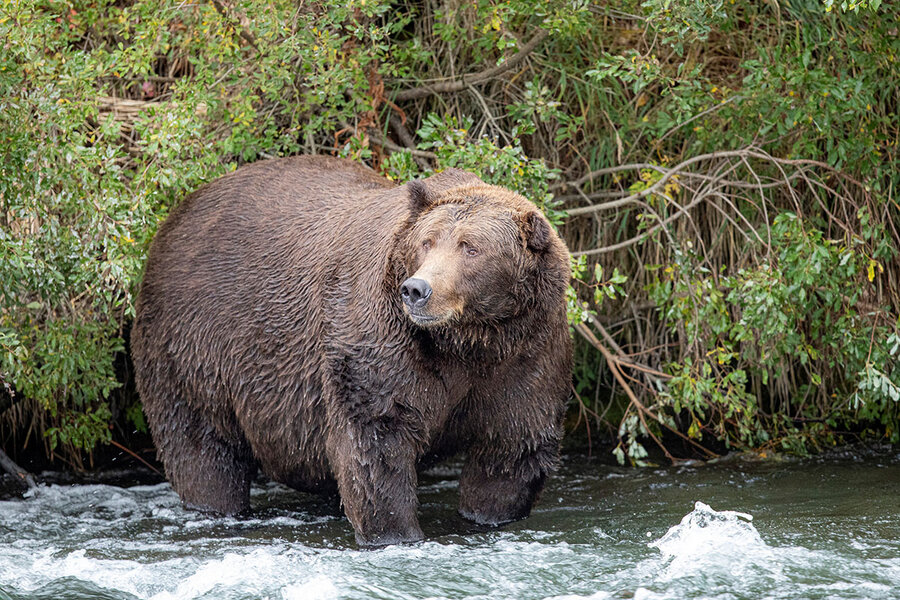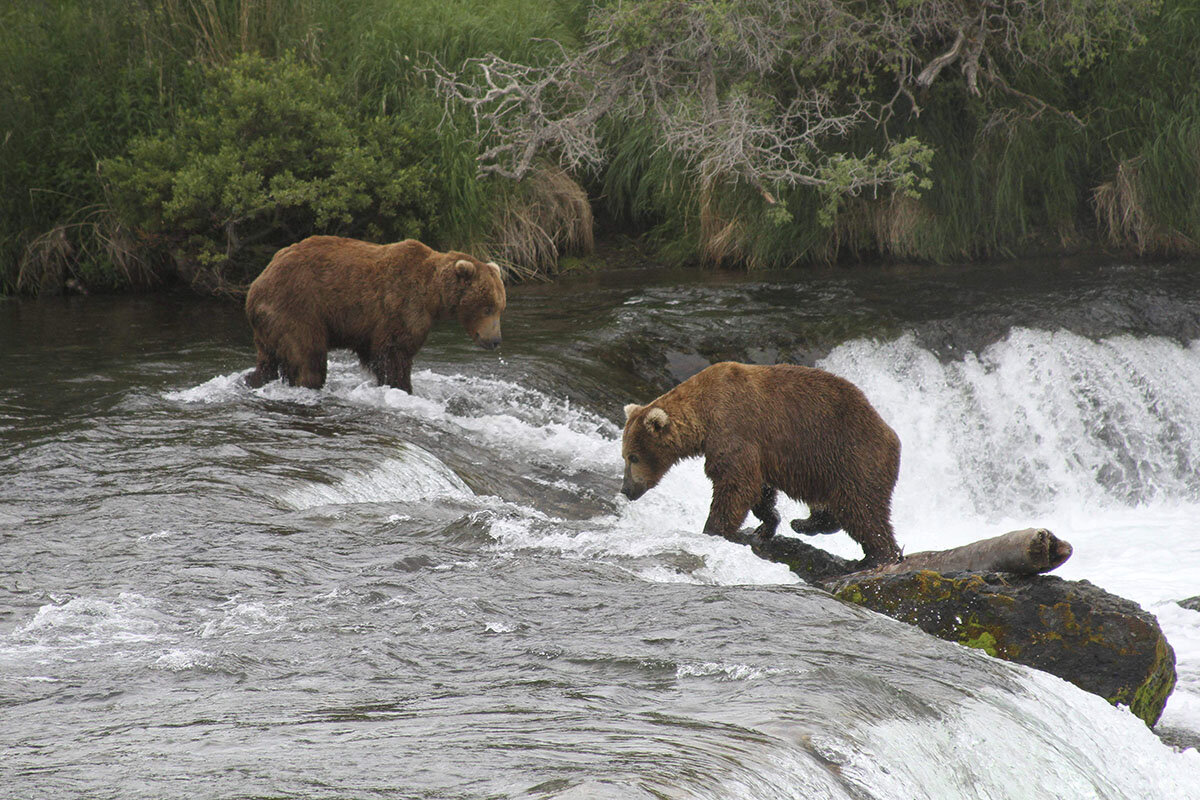A weighty vote: Who will win Fat Bear Week?
Loading...
To many people, October is for apple picking, fall foliage, and Halloween. But to some, the month brings another excitement: fat bears.
As the brown bears of Katmai National Park and Preserve in Alaska focus on chowing down their last meals for months in preparation for the long winter hibernation, humans are celebrating the animals’ chubbiness.
Fat Bear Week began on Wednesday, and, on October 6, one ursine winner will be crowned Fattest Bear of 2020.
Why We Wrote This
With wildfires, climate change, and the extinction crisis dominating science headlines, you would be forgiven for thinking that every ecosystem in the world is collapsing. But as one lighthearted contest shows, some places are thriving.
Visitors to fatbearweek.org can vote online in bracket-style matchups for who they think has packed on the most pounds. On the site are before-and-after photos of each bear, shot during their skinnier spring days and their autumn rotundity. They can also learn about the bears’ life histories and watch live webcams showing the bears fishing for salmon in their natural habitat, Brooks River. The bears themselves are, of course, oblivious to the contest.
Fat Bear Week has become an online sensation, with tens of thousands of people voting. The park is using it as an education tool to teach about hibernation, bear health, and ecosystem dynamics. But the popularity of Fat Bear Week also teaches us something about humans, too.
“We do like to make this connection with animals,” says Susan Clayton, a professor of psychology at the College of Wooster, in Wooster, Ohio.
“There’s no question that most people like the idea of nature, they like the idea of wild nature. And being able to form a connection with an animal feels like you’re part of that wildness.”
The bear maximum
This year’s Fat Bear Week is on track to be the biggest yet. Before voting even began, more than 95,000 people responded to a pre-voting poll question on the website.
Some of the increased traffic could be because this is the first year voting occurs on a website, hosted by explore.org, rather than on Facebook. But the pandemic and the polarizing politics in the news might also be playing a role, suggests Mike Fitz, resident naturalist at explore.org and author of “The Bears of Brook Falls,” a forthcoming book on Katmai’s bears.
Mr. Fitz, a former ranger at Katmai who was involved in setting up the first Fat Bear Week, has picked bear 747 – one of the park’s largest and most dominant males and who was estimated to weigh more than 1,400 pounds last year – to win for the past few years, but 747 has yet to come out on top in the voting.
“It’s fun, simply put,” Mr. Fitz says. Fat Bear Week offers a diversion amidst the din of human life today, and, he says, “it’s a positive story. It’s an opportunity to reflect on the success of bears in Katmai National Park.”
The rangers at Katmai see the bears’ fatness as something to celebrate. It means they are healthy and ready to survive several months in hibernation without food or water. Mama bears even give birth to and nurse cubs while in their dens, meaning they must consume even more calories.
Bearing good news
And it’s not just about the bears. Fat bears are also a sign of a healthy and robust ecosystem, too, since they’ve spent the summer and fall gorging themselves on food – particularly salmon that they fish out during their migrations and spawning period.
“It’s a testament to the sustainability of the salmon run currently in Bristol Bay, which is the largest salmon run left in the world,” Mr. Fitz says. “And it’s really been gangbusters over the last several years and it’s been generally very healthy over the last several decades. So it gives people an opportunity also to see an ecosystem functioning at its fully realized potential.”
There’s something comforting about fat bears, too, says Dr. Clayton. “It suggests that nature is healthy, that nature is OK, we haven’t destroyed it,” she says. “There’s that really appealing kind of reassurance there, that, ‘look, not only are there still bears, they’re fat.’”
Furthermore, the webcams let people around the world observe the bears in their natural habitats from their own living rooms, says Jeffrey Skibins, an assistant professor at East Carolina University who specializes in the human dimensions of wildlife conservation and conservation psychology. And that can cultivate a sense of connection with the bears.
“It’s something that’s relatable,” says Dr. Skibins. “Especially as we’re coming up into the holiday seasons, I think everybody could look at one of the fat bears and go, ‘oh, gosh, I’m going to be that fat bear in a couple of months.’”
According to his research, that relatability fosters conservation action.
“Being able to watch these bears and identify individuals and connect with them,” says Dr. Skibins, “you really are starting to check all the boxes of what makes a powerful nature encounter for anybody, whether it’s online or in person.”







